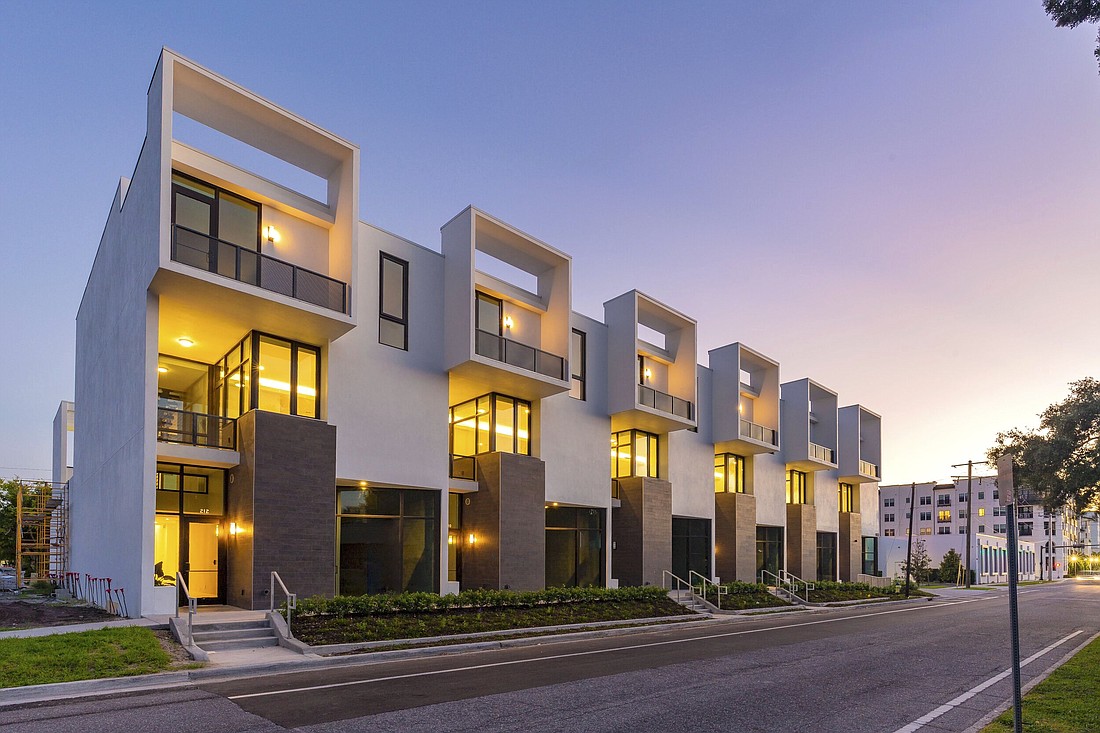- July 26, 2024
-
-
Loading

Loading

There is more to the Sarasota School of Architecture, or “Sarasota modern," than the geometric shapes that popularized the post-World War II design trend.
It blended design with function, combining open concepts with large panes of glass and poured concrete shapes that combined weather resilience with form, making famous architects such as Ralph Twitchell, Paul Rudolph, Jack West, Victor Lundy and more.
Likewise, there is more to architecture in the Sarasota area than its influence on mid-century modern design.
That’s why Architecture Sarasota, a nonprofit that stewards the legacy of the Sarasota School of Architecture, embarked on a mission to create its new exhibit, "Moderns That Matter: Sarasota 100."
Although it fills much of Architecture Sarasota’s home, McCulloch Pavilion — which at 265 S. Orange Ave. happens to be No. 83 on the list — President Marty Hylton describes the exhibit as a museum without walls stretching from Venice to Manatee County with a heavy emphasis on Sarasota proper.
In addition to residential and commercial structures — some that no longer exist and others that may not soon — the collection representing more than a century of architecture and design includes neighborhoods, streets and even, at No. 100, the bayfront.
The list was culled from nearly 600 nominations by the public — plus some 200 more buildings gathered through additional research — that represent modern design not only by today’s standards, but was modern at the time the structures were built.
“No. 99 (a home on Siesta Key) was finished two years ago,” Hylton said. “No. 100 was a little bit conceptual. Someone just nominated, very simply, the waterfront. Obviously our whole world here is connected to water. The idea of waterfront as 100 is because it's changing, and it's going to continue to change.”

At No. 1 is the John and Mable Ringling estate on the bay, Ca' d'Zan, which was built in 1926. To the layman, it hardly appears modern by contemporary standards.
“We put The John and Mable Ringling Museum of Art campus as No. 1 because if you took away all the Venetian Gothic Revival, it was really very modern at the time,” Hylton said. They poured a concrete structure that was really sophisticated, so we took a broad definition of what modern is. We talk a lot about the Sarasota School of Architecture, but it really is 20th and early 21st century.”
The 98 examples in between represent 10 categories by decade from the 1920s to the 2020s, a virtual tour of Sarasota County history as defined by its architecture. The categories are:

Why is the collection important?
“Education, inspiration and celebration,” Hylton said. “We've established a baseline hearing from the community of the things they care about, and now that's our marching order. That's our priority. We obviously can't focus on all 100. But it's going to help us as an organization prioritize our actions and next steps.
“Some things like the newer buildings help us advocate for more that type of architecture, for more projects like The Bay and the Sarasota Art Museum, which both got a lot of nominations. For others that are threatened, it's about what can we do either to document them before they're gone or is there something we can do to help ensure that they survive.”